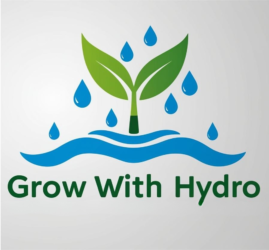Hey there, fellow plant lovers! If you’re just dipping your toes into the world of hydroponics, you might be wondering what to do with all those old tubes, pumps, and grow trays once they’ve served their purpose. The good news? Hydroponics isn’t just great for growing plants, it can also be surprisingly eco-friendly when done right!
As someone with a biology background, I geek out over sustainable growing methods, and today, we’re talking about how to recycle and reuse hydroponic system components. Whether you’re a hobbyist or dreaming of a full-scale hydroponic farm, this guide will help you minimize waste and maximize efficiency. Let’s dive in!
Understanding the Basics: What is Hydroponics?
Before we get into recycling, let’s quickly recap what hydroponics is all about. Simply put, hydroponics is a method of growing plants without soil, using nutrient-rich water instead. This system has some serious perks:
- Faster plant growth (no soil means roots get nutrients directly!)
- Less water waste (hydroponics uses up to 90% less water than traditional farming)
- Space efficiency (great for urban growers with limited room)
Hydroponics isn’t new, it dates back to the ancient Hanging Gardens of Babylon! But modern tech has made it more accessible than ever. A basic hydroponic setup includes:
- Reservoir (holds the nutrient solution)
- Pump & tubing (circulates water)
- Grow tray/net pots (supports plants)
- Growing medium (like clay pellets or rockwool)
- Lights (if growing indoors)
Since hydroponics relies on these components, it’s important to think about their environmental impact. Many parts are made of plastic, metal, or synthetic materials, so recycling and reusing them is key to keeping your grow operation green, literally and figuratively!
Identifying Recyclable Components in Hydroponic Systems
Not everything in your hydroponic setup needs to end up in a landfill. Here’s a quick breakdown of what can (and can’t) be recycled:
✅Recyclable:
- Plastic containers & trays (check local recycling codes)
- PVC or silicone tubing (some facilities accept them)
- Metal pumps & fittings (often scrap metal recyclable)
- Glass reservoirs (if not broken)
❌ Not easily recyclable:
- Used growing media (rockwool, clay pellets, though some can be cleaned & reused!)
- Contaminated tubing (if coated in algae or mineral buildup)
Pro tip: Keep an eye on wear and tear. If a pump starts making weird noises or tubing gets brittle, it might be time for a replacement. But don’t toss the old parts just yet, there are plenty of ways to reuse them!
Clever Ways to Reuse Hydroponic Components
Got some old hydroponic gear lying around? Get creative! Here are some fun ways to give them a second life:
DIY Projects:
- Turn an old reservoir into a mini compost bin for kitchen scraps.
- Repurpose PVC pipes into vertical planters for herbs.
- Use net pots as seed starters for soil gardening.
Art & Decor:
- Transform grow lights into funky indoor lamps.
- Stack old trays to make shelving for small plants.
- Upcycle tubing into DIY drip irrigation for outdoor gardens.
Some hydroponic growers have even built aquaponics systems by reusing old pumps and tanks to integrate fish farming with plant growth. How cool is that?
Eco-Friendly Disposal: Recycling Hydroponic Materials
When reuse isn’t an option, responsible recycling is the next best thing. Here’s how to do it right:
- Disassemble carefully – Separate plastic, metal, and electronic parts.
- Clean components – Remove algae or mineral deposits to avoid contamination.
- Check local recycling rules – Some plastics (like PVC tubing) may need special handling.
- Donate or sell usable parts – Many urban farms or community gardens would love spare supplies!
Success story: A hydroponic farm in Portland reduced waste by 90% by partnering with a local recycling center to process old grow trays and pumps. Small changes add up!
The Benefits of Recycling & Reusing in Hydroponics
Why go through the trouble? Here’s why it matters:
Less environmental waste – Fewer plastics in landfills and oceans.
Cost savings – Reusing parts means spending less on replacements.
Stronger community efforts – More growers adopting sustainable practices = bigger impact.
The hydroponics industry is shifting toward closed-loop systems, where everything gets reused or recycled. By joining the movement, you’re helping shape a greener future for farming.
Future Trends in Sustainable Hydroponics
What’s next for eco-friendly hydroponics? Exciting innovations are on the horizon:
Biodegradable growing media (goodbye, rockwool waste!)
Solar-powered hydroponic systems (reducing energy use)
Government incentives for recycling agricultural plastics
As more people embrace hydroponics, the push for sustainability will only grow. Whether you’re a hobbyist or a commercial grower, you can be part of the change.
Final Thoughts
Recycling and reusing hydroponic components isn’t just good for the planet , it’s smart growing! By adopting these habits early, you’ll save money, reduce waste, and contribute to a more sustainable way of farming.
Got any cool hydroponic recycling hacks? Drop them in the comments , I’d love to hear your ideas!
Happy growing, friends!
,
Your friendly neighborhood bio-nerd & hydroponics enthusiast
